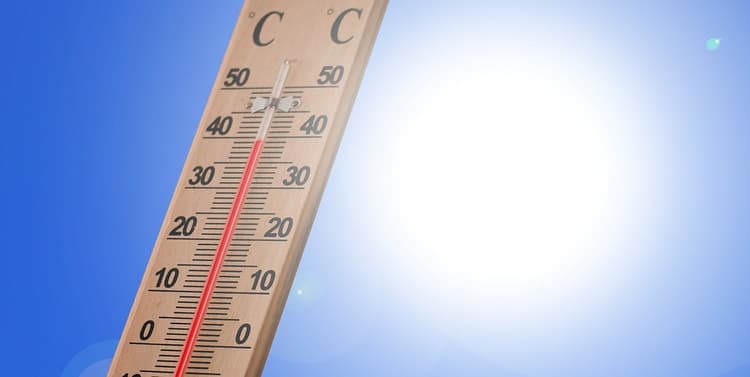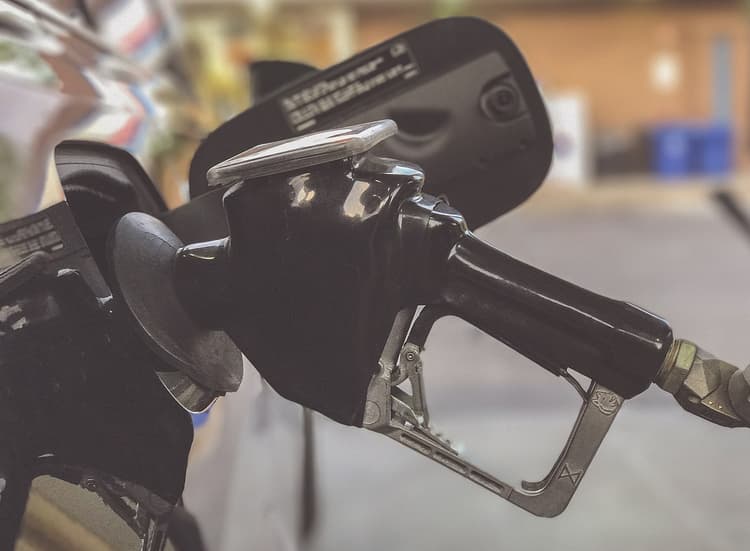Reduction of Air Pollutants
Liam Thomas
7 min read
Listen to this study note
Study Guide Overview
This AP Environmental Science study guide covers air pollution control, focusing on key vocabulary (e.g., Kyoto Protocol, Paris Agreement), methods of air pollution reduction (regulations, technologies like catalytic converters and scrubbers, and conservation/alternative energy), important laws (e.g., Clean Air Act, Montreal Protocol), and key concepts for the exam (greenhouse gases, control technologies, international agreements). It also includes practice questions and common mistakes to avoid.
#AP Environmental Science: Air Pollution Control - Your Night-Before Guide 💨
Hey there, future AP Environmental Science superstar! Let's get you feeling confident and ready to ace this exam. This guide is designed to be your quick, easy-to-use resource for those last-minute jitters. We'll break down the key concepts, link them together, and make sure you're not just memorizing, but understanding.
#1. Key Vocabulary 📚
Let's start with some essential terms. These are your building blocks for understanding the bigger picture.
- Kyoto Protocol:
International agreement to reduce greenhouse gas emissions.
Focuses on anthropogenic CO2 emissions.
-
Hydrofluorocarbons (HFCs): Powerful greenhouse gases, often used as refrigerants. 🧊
-
Perfluorocarbons (PFCs): Another group of potent greenhouse gases, used in industrial processes.
-
Sulfur hexafluoride (SF6): Extremely potent greenhouse gas, used in electrical equipment.
-
Paris Agreement:
Global agreement to limit global warming to below 2°C
through mitigation and adaptation of anthropogenic carbon dioxide.
-
Vapor Recovery Nozzle: Device on gas pumps to reduce VOC emissions. ⛽
-
Catalytic Converter: Device in vehicles to convert toxic gases into less harmful ones. 🚗
-
Wet Scrubber: Air pollution control device that uses liquid to remove pollutants. 💦
-
Dry Scrubber: Air pollution control device that uses dry reagents to remove pollutants. 💨
-
Electrostatic Precipitator: Air pollution control device that uses electrical charge to remove particulates.⚡
#2. Methods of Air Pollution Reduction 🛠️
To tackle air pollution, we need a multi-pronged approach. Think of it like a superhero team, each with its own special power:
#2.1 Regulations 📜
-
#International Agreements:
Kyoto Protocol (1997): Focused on reducing six major greenhouse gases: CO2, CH4, N2O, HFCs, PFCs, and SF6. Remember these! 💡 - Paris Agreement (2016): Aims to limit global temperature increase to below 2°C. This is a big deal for climate change mitigation.

#2.2 Technological Solutions ⚙️
- Vehicles:
- Vapor Recovery Nozzles: These handy devices on gas pumps minimize the release of volatile organic compounds (VOCs). Less smell = less pollution!

- **Catalytic Converters**:
Installed in vehicles to convert harmful gases (CO, NOx, hydrocarbons) into less harmful ones (CO2, O2, N2, H2O).
A must-know for the exam!
- Industrial Methods:
- Scrubbers: These are like the vacuum cleaners of industrial exhaust. They remove gases and particulates.
- Wet Scrubbers: Use liquid (usually water) to trap pollutants. Think of it as a shower for exhaust gases. 🚿
- Dry Scrubbers: Use dry reagents to neutralize or convert pollutants. Like a chemical sponge! 🧽
- Electrostatic Precipitators:
- Scrubbers: These are like the vacuum cleaners of industrial exhaust. They remove gases and particulates.
Use high voltage to ionize particles, then attract them to charged plates.
Super effective for coal-burning plants.
#2.3 Conservation and Alternative Energy 🌿
-
Reducing Energy Usage: Carpooling, mass transit, and compact cities mean less pollution. Think smarter, not harder!
-
Green Cities: Energy-efficient buildings, green roofs, and better waste management. Let's make our cities breathe easier! 🌳
-
Alternative Energy: Solar, wind, hydro, and hydrogen.
These reduce greenhouse emissions and eliminate combustion particulates.
The future is clean energy! ☀️
#3. Important Laws and Acts ⚖️
Understanding these laws helps you see how policy shapes environmental action:
- Clean Air Act (USA):
Regulates air emissions from stationary and mobile sources. Sets National Ambient Air Quality Standards (NAAQS).
- Montreal Protocol:
International treaty to protect the ozone layer by phasing out ozone-depleting substances. Also helps with climate change mitigation.
- EU's Thematic Strategy on Air Pollution: Comprehensive plan to reduce air pollution in the EU. Covers industry, agriculture, transport, and households.
- Beijing Action Plan: Plan by Beijing to address its air pollution, including limiting cars and promoting clean energy.
Mnemonic for Greenhouse Gases: Can My New House Please Stay (CO2, CH4, N2O, HFCs, PFCs, SF6)
#4. Final Exam Focus 🎯
Okay, deep breaths! Here’s what to really focus on for the exam:
Greenhouse Gases: Know the major ones and their sources.
#(CO2, CH4, N2O, HFCs, PFCs, SF6)
Air Pollution Control Technologies: Understand how catalytic converters, scrubbers, and electrostatic precipitators work.
International Agreements: Be familiar with the Kyoto Protocol and the Paris Agreement.
- Laws and Regulations: Know the basics of the Clean Air Act and the Montreal Protocol.
- Connections: Be ready to link air pollution to climate change, human health, and energy production. AP loves to combine concepts!
Time Management Tip: Don't spend too long on one question. If you're stuck, move on and come back later. Prioritize FRQs, as they carry more weight.
Common Mistake: Confusing the Kyoto Protocol and the Paris Agreement. Remember, Kyoto focused on specific gases, while Paris focuses on temperature targets.
#5. Practice Questions
Practice Question
#Multiple Choice Questions
-
Which of the following is NOT a primary greenhouse gas targeted by the Kyoto Protocol? (A) Carbon dioxide (CO2) (B) Methane (CH4) (C) Water vapor (H2O) (D) Nitrous oxide (N2O) (E) Sulfur hexafluoride (SF6)
-
A catalytic converter in a car is primarily designed to reduce emissions of which of the following? (A) Carbon dioxide and water vapor (B) Methane and ozone (C) Nitrogen and oxygen (D) Carbon monoxide, nitrogen oxides, and hydrocarbons (E) Sulfur dioxide and particulates
-
Which of the following is the most effective strategy for reducing the release of volatile organic compounds (VOCs) during gasoline refueling? (A) Using a catalytic converter (B) Employing a vapor recovery nozzle (C) Installing an electrostatic precipitator (D) Using a wet scrubber (E) Switching to diesel fuel
#Free Response Question
Question:
Air pollution is a major environmental problem with significant impacts on human health and ecosystems. Discuss the sources of two primary air pollutants, describe two technologies used to reduce air pollution from stationary sources, and explain one international agreement aimed at reducing greenhouse gas emissions. Finally, propose one strategy for individuals to reduce their contribution to air pollution.
Scoring Guidelines:
-
(2 points) Sources of Two Primary Air Pollutants:
- (1 point) Identify a primary air pollutant (e.g., sulfur dioxide, nitrogen oxides, particulate matter, carbon monoxide, VOCs)
- (1 point) Describe a source of the identified pollutant (e.g., SO2 from coal-burning power plants, NOx from vehicle emissions, PM from construction sites, CO from incomplete combustion, VOCs from industrial solvents)
-
(2 points) Technologies for Reducing Air Pollution from Stationary Sources:
- (1 point) Describe a technology (e.g., wet scrubber, dry scrubber, electrostatic precipitator)
- (1 point) Explain how the technology reduces pollution (e.g., wet scrubber uses liquid to trap pollutants, dry scrubber uses reagents to neutralize pollutants, electrostatic precipitator uses electrical charge to remove particulates)
-
(2 points) International Agreement Aimed at Reducing Greenhouse Gas Emissions:
- (1 point) Identify an agreement (e.g., Kyoto Protocol, Paris Agreement)
- (1 point) Explain the agreement's goal (e.g., Kyoto Protocol aimed to reduce greenhouse gas emissions, Paris Agreement aims to limit global temperature increase)
-
(1 point) Strategy for Individuals to Reduce Air Pollution:
- (1 point) Propose a valid strategy (e.g., use public transportation, carpool, reduce energy consumption, use renewable energy, plant trees)
#Combined Units Question
Explain how the use of scrubbers in coal-burning power plants impacts both air quality and water quality. Be sure to discuss the specific pollutants removed and the potential consequences for aquatic ecosystems if wastewater from scrubbers is not properly treated.
You've got this! Go get 'em! 💪
Continue your learning journey

How are we doing?
Give us your feedback and let us know how we can improve





